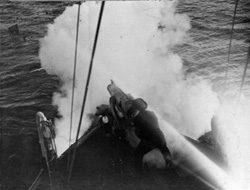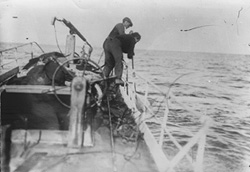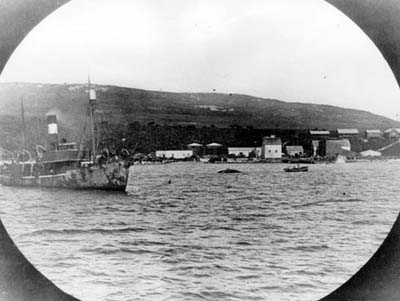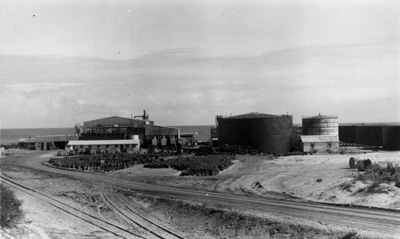|
Whaling
Whaling in Western Australian waters was carried out well before the establishment of the Swan River Colony in 1829.
Throughout the nineteenth century American whalers sailed the Southern Ocean in search of their prey. By the time of Federation in 1901 whaling had fallen into decline due to over-exploitation. This pattern of exhausting
limited resources for quick profits characterises the history of Western Australia�s sporadic whaling industry in the twentieth century.
It was not until 1912 that the local whaling industry was revived with the arrival of
Norwegian whalers. Equipped with new explosive harpoons, which allowed whalers to kill larger species of whales, three Norwegian companies obtained licenses to
operate along the western coast using modern chasers and factory ships. Even with the new technologies, a lack of fresh water and safe harbours made whaling along the Western Australian coast difficult.
Norwegians operated from Jervis Bay, and Frenchman�s Bay (Albany), before basing
their activities from Norwegian Bay (Point Cloates) in the State�s North-West. Between 1913 and 1916 they caught more than 4,000 whales making considerable
profit from the whale oil and fertilizer they produced. In 1916 they abandoned whaling when dwindling numbers made the industry less viable.
Between 1925 and 1929 the Norwegian Bay Whaling Company operated profitably
from Point Cloates once whale numbers had recovered. Then again from 1936 foreign whalers operated off the North-West, killing 7,000 whales in three years.
The Second World War put the whaling industry on hold, but by 1948 a world shortage
of fats caused the price of whale oil to rise to six times the prewar price. With whale numbers up, whaling became a highly lucrative industry, with three companies
operating off the Western Australian coast at Albany, Point Cloates and Carnarvon. By 1955 the Western Australian stations accounted for 1,126 whales, or about 60 % of the Australian total.
By 1956 whaling operations in the North-West had been consolidated at Babbage
Island, near Carnarvon under the Nor� West Whaling Company before eventually ceasing in 1963 due to a fall in the number of humpback whales. A ban on their
capture closed all Australian whaling stations except the Cheyne�s Beach station at Frenchman�s Bay, Albany. The hunting of sperm whales continued until 1978 when the
dwindling numbers led to its closure. In 1985 the International Whaling Commission introduced a ten year moratorium on whaling, a ban which was extended during the
1990s, in spite of some whaling carried out for �scientific purposes� by Japanese, Norwegian and Icelandic whalers.
|




